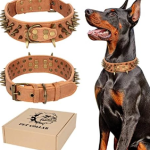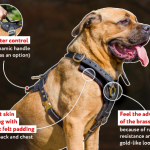Cane Corso Dog Breed
The Cane Corso Dog Breed: An In-Depth Exploration
Introduction
The Cane Corso is a breed that captivates the imagination with its imposing presence and noble bearing. Originating from Italy, this breed has a storied history that intertwines with the rise and fall of empires, evolving from a fearsome warrior to a beloved family companion. This comprehensive guide will delve into every aspect of the Cane Corso, including its history, physical characteristics, temperament, care requirements, and more. Whether you’re a prospective owner or an existing enthusiast, this article will provide a thorough understanding of this majestic breed.
Chapter 1: Historical Roots and Evolution
1.1 Ancient Origins
The Cane Corso’s origins can be traced back to the ancient Molossian dogs of Greece and Rome. These dogs, known for their size and strength, were used in various roles including guarding, hunting, and even in warfare. The Roman Molossians are believed to be the ancestors of the modern Cane Corso, and their legacy can be seen in the breed’s physical prowess and guarding instincts.
1.2 Medieval and Renaissance Italy
During the medieval period, the Cane Corso was an invaluable asset to Italian farmers and hunters. Known for their exceptional hunting skills, these dogs were used to track and capture large game such as wild boar and deer. They also served as formidable guard dogs, protecting homes and livestock from intruders and predators.
1.3 Modern Revival
The Cane Corso faced near extinction in the 20th century due to changes in agriculture and urbanization. However, dedicated breeders and enthusiasts worked to revive the breed. Their efforts led to the Cane Corso’s re-establishment as a recognized breed in the late 20th and early 21st centuries, including its official recognition by the American Kennel Club (AKC) in 2010.
Chapter 2: Physical Characteristics
2.1 Size and Build
The Cane Corso is a large, muscular dog with a commanding presence. Males typically stand between 24 to 27.5 inches (61 to 70 cm) at the shoulder and weigh between 99 to 110 pounds (45 to 50 kg). Females are slightly smaller, standing between 23.5 to 26 inches (60 to 66 cm) and weighing between 88 to 99 pounds (40 to 45 kg). The breed’s robust build is characterized by a broad chest, powerful legs, and a strong, athletic body.
2.2 Coat and Color
The Cane Corso has a short, dense coat that lies close to the body, providing protection against the elements. Coat colors include black, gray, fawn, red, and brindle. The breed’s coat is relatively low-maintenance, requiring only occasional brushing to remove loose hair and maintain a healthy appearance.
2.3 Head and Face
The Cane Corso’s head is one of its most distinctive features. It is broad and square, with a prominent stop (the transition between the forehead and the muzzle). The breed has a strong jaw with a scissor bite, and its expressive eyes are usually dark and almond-shaped. The ears can be cropped or left natural, depending on personal preference and local regulations.
2.4 Ears and Tail
Historically, Cane Corsos had cropped ears and docked tails. However, natural ears and tails are becoming more common and are often preferred in modern times. Natural ears are medium-sized, set high, and fold forward. The tail, when left natural, is long and tapering, carried high.
Chapter 3: Temperament and Behavior
3.1 Loyalty and Affection
The Cane Corso is renowned for its loyalty and affection towards its family. This breed forms strong bonds with its owners and is known for its protective nature. While they are naturally reserved around strangers, they are deeply loving and attentive with their family members.
3.2 Intelligence and Trainability
Cane Corsos are highly intelligent dogs that excel in training. They are quick learners and respond well to positive reinforcement techniques such as treats and praise. Their intelligence makes them well-suited for various roles, including obedience work, agility, and protection training.
3.3 Protective Instincts
One of the Cane Corso’s most notable traits is its protective instinct. This breed has a natural ability to guard its home and family. Proper socialization and training are essential to ensure that this protective nature does not become overly aggressive or defensive.
3.4 Independence and Temperament
While Cane Corsos are loyal and affectionate, they also have an independent streak. They are strong-willed and can be somewhat aloof with strangers. Early socialization and consistent training are crucial to help them become well-rounded and confident adults.
Chapter 4: Care and Maintenance
4.1 Diet and Nutrition
A balanced diet is essential for maintaining the health of your Cane Corso. High-quality dog food formulated for large breeds is recommended to support their growth and development. Pay attention to portion sizes and avoid overfeeding, as obesity can lead to health issues. Consult with your veterinarian to determine the best diet plan for your individual dog.
4.2 Exercise Requirements
Cane Corsos are active and athletic dogs that require regular exercise to stay healthy and happy. Daily walks, playtime, and opportunities for running are essential to meet their physical needs. Engaging in activities such as agility training or obedience work can also provide mental stimulation and prevent boredom.
4.3 Grooming
The Cane Corso’s grooming needs are relatively minimal. Regular brushing helps to remove loose hair and maintain a healthy coat. Bathe your dog as needed to keep their coat clean and fresh. Pay attention to nail trimming, ear cleaning, and dental care to ensure overall health and well-being.
4.4 Health Considerations
Like all breeds, Cane Corsos are prone to certain health conditions. Common health concerns include:
- Hip Dysplasia: A genetic condition that affects the hip joints and can lead to arthritis.
- Elbow Dysplasia: A condition affecting the elbows, causing pain and lameness.
- Bloat: A serious condition where the stomach fills with gas and twists, requiring immediate veterinary attention.
- Heart Conditions: Some Cane Corsos may be prone to heart issues such as dilated cardiomyopathy.
Regular veterinary check-ups and health screenings are essential to monitor and address any potential health issues.
Chapter 5: Training and Socialization
5.1 Basic Obedience Training
Starting with basic obedience training is crucial for a well-behaved Cane Corso. Teach commands such as sit, stay, come, and heel using positive reinforcement techniques. Consistency and patience are key to successful training.
5.2 Advanced Training
As your Cane Corso matures, consider advanced training to further develop their skills. Obedience classes, agility training, and protection work can provide valuable mental and physical stimulation. Advanced training also helps to strengthen the bond between you and your dog.
5.3 Socialization
Socialization is critical for the Cane Corso to develop into a well-adjusted adult dog. Expose your dog to a variety of people, animals, and environments from a young age. Positive experiences during socialization help to build confidence and reduce the likelihood of behavioral issues.
5.4 Handling Behavioral Issues
Cane Corsos are generally well-behaved but may exhibit behavioral issues if not properly trained or socialized. Address issues such as aggression, separation anxiety, or excessive barking with the help of a professional dog trainer or behaviorist.
Chapter 6: Living with a Cane Corso
6.1 Integration into Family Life
Integrating a Cane Corso into family life requires careful planning and consideration. Ensure that your home environment is suitable for this large breed, with enough space for them to move comfortably. Establish a routine for feeding, exercise, and training to provide stability and structure.
6.2 Interaction with Children and Other Pets
Cane Corsos can be excellent with children and other pets when properly socialized. Supervise interactions to ensure safety and teach children how to interact respectfully with the dog. With appropriate introductions and positive reinforcement, Cane Corsos can coexist harmoniously with other animals.
6.3 Travel and Adaptability
Cane Corsos can adapt to travel if introduced gradually. Ensure that your dog is comfortable with car rides and has a designated space for travel. Gradual exposure to new environments helps to build confidence and reduce stress.
6.4 Exercise and Activity
Regular exercise is essential for the Cane Corso to maintain physical and mental health. Provide opportunities for exercise through daily walks, playtime, and interactive activities. Engaging in activities such as fetch, tug-of-war, and obedience training can help to keep your dog active and mentally stimulated.
Chapter 7: Cane Corso Community and Resources
7.1 Breed Clubs and Organizations
Joining Cane Corso breed clubs and organizations provides valuable resources and support. These clubs offer information on breed-specific care, training, and events. They also provide opportunities to connect with other Cane Corso owners and enthusiasts.
- National Clubs: Organizations such as the Cane Corso Association of America (CCAA) offer resources, events, and support for Cane Corso owners.
- Local Clubs: Regional clubs provide a sense of community and local events for Cane Corso enthusiasts.
7.2 Participating in Events
Participating in breed-specific events allows you to showcase your Cane Corso’s abilities and achievements. Events such as dog shows, obedience trials, and agility competitions provide opportunities for both you and your dog to excel and gain recognition.
7.3 Supporting Rescue Organizations
Supporting Cane Corso rescue organizations helps dogs in need. These organizations work to rescue, rehabilitate, and rehome Cane Corsos, providing them with a second chance at a loving home. Consider volunteering, fostering, or donating to support their efforts.
Chapter 8: The Future of the Cane Corso
8.1 Breeding and Preservation
The future of the Cane Corso depends on responsible breeding practices and efforts to preserve the breed’s health and integrity. Reputable breeders adhere to breed standards and conduct health screenings to ensure the continued vitality of the breed. Efforts to educate the public and promote responsible ownership also contribute to the breed’s future.
8.2 Advances in Health and Wellness
Ongoing research and advancements in veterinary medicine contribute to the health and well-being of Cane Corsos. Staying informed about the latest developments in canine health can help you provide the best care for your dog. Regular veterinary check-ups and preventive care are essential for maintaining a healthy and happy Cane Corso.
8.3 Community Engagement and Education
Engaging with the Cane Corso community and participating in educational opportunities helps to promote responsible ownership and breed preservation. Attend events, join clubs, and stay informed about breed-specific issues to contribute to the well-being of the Cane Corso.
Conclusion
The Cane Corso is a breed that embodies strength, loyalty, and elegance. With a rich history and a range of admirable traits, this majestic dog has earned its place as a beloved companion and protector. Understanding the Cane Corso’s history, physical characteristics, temperament, and care requirements will help you provide the best possible home for this remarkable breed.
Whether you are considering adding a Cane Corso to your family or are already a dedicated owner, embracing the breed’s unique qualities and needs will ensure a rewarding and fulfilling relationship. By investing time and effort into their care, training, and socialization, you can enjoy the many benefits of having a Cane Corso as a loyal and loving companion for years to come.






